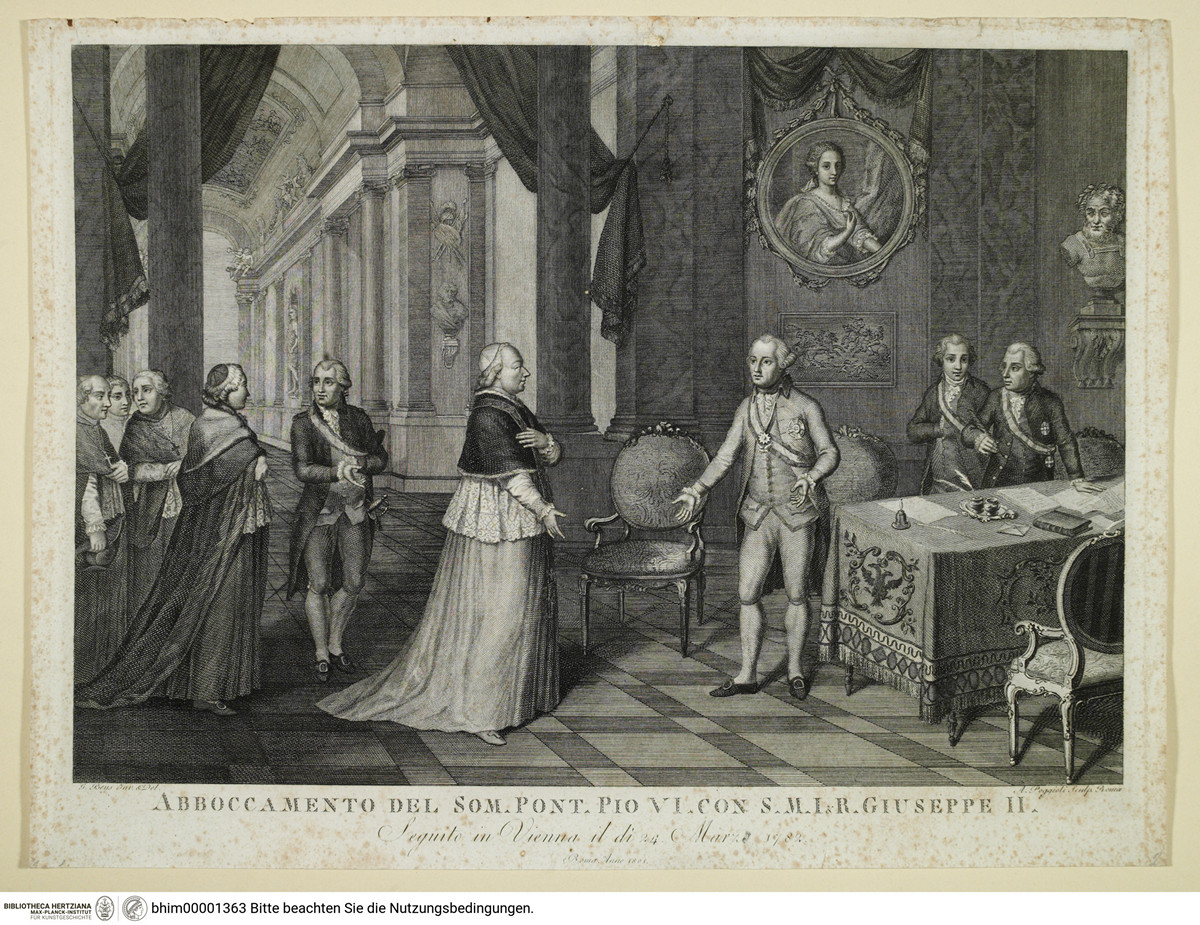
Unterredung Josephs II. mit Papst Pius VI. in Wien am 24. März 1782 (Rom, Bibliotheca Hertziana, Kunstbesitz, Inv. Nr. D60033)
How can the history of the complex church-state relations in 19th and 20th century East-Central Europe be grasped, taking into account continuities and discontinuities spanning changes of regimes? Does such a research which examines the conflicts between church and state and the various processes involved in attempts to address these conflicts provide insights which have a wider significance beyond the history of the Church?
In order to answer these questions, the hypothesis which constitutes the point of departure for SOVEREIGNTY, is that behind the ecclesiastical policy of every modern political system lay the need to ensure the sovereignty of the state. As the preeminent attribute of modern statehood, sovereignty, after all, was essential to all of the successive political systems. Regardless of their ideological orientations, each of these systems had to consider how the local organization of the transnational Catholic Church could be accommodated within the frames of the modern state.
Thus, the project proposes an approach to the study of the history of secularism from the perspective of the claims of the modern state. That is, it investigates the question of how the historical prerogatives and transnational jurisdiction of the Catholic Church challenged the modern state’s claim to sovereignty.
Work packages
In order to address the essential question concerning the interrelationships among the (religious) policies adopted by the modern state to ensure its sovereignty and the processes of secularism and nation building, the project is structured along four work packages.
1. Cultural history of the oath of loyalty
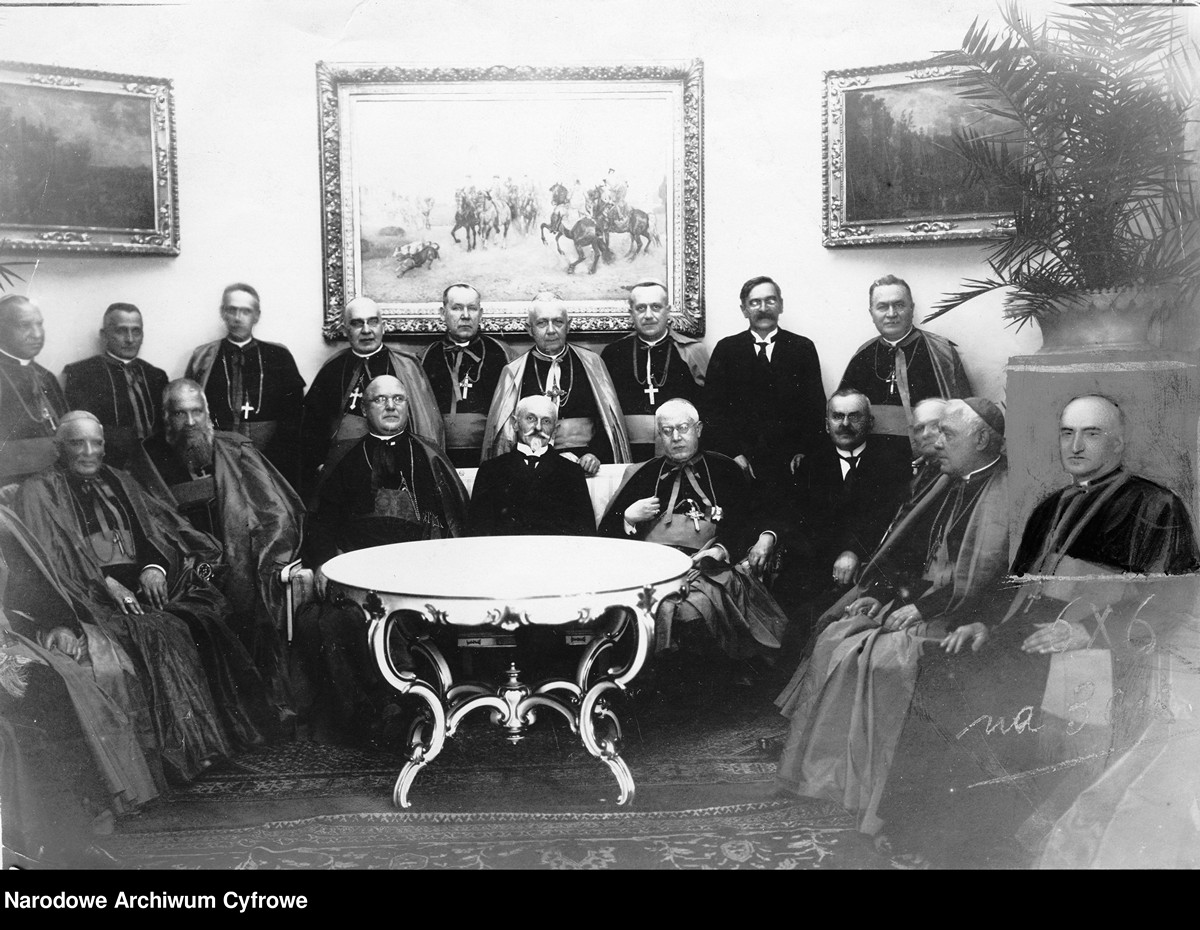
Oath of the Episcopate in Poland Sept 1925 (National Digital Archives NAC)
The project intends to offer a comprehensive and contextual interpretation of oaths of loyalty to further an understanding of the functions of these oaths and the motivations of the middle-level historical agents involved in the context of Josephinism, nation building, and communism and the transformations of the oaths in the context of the changing relationship between the nation state and transnational loyalties.
2. Church–state relations
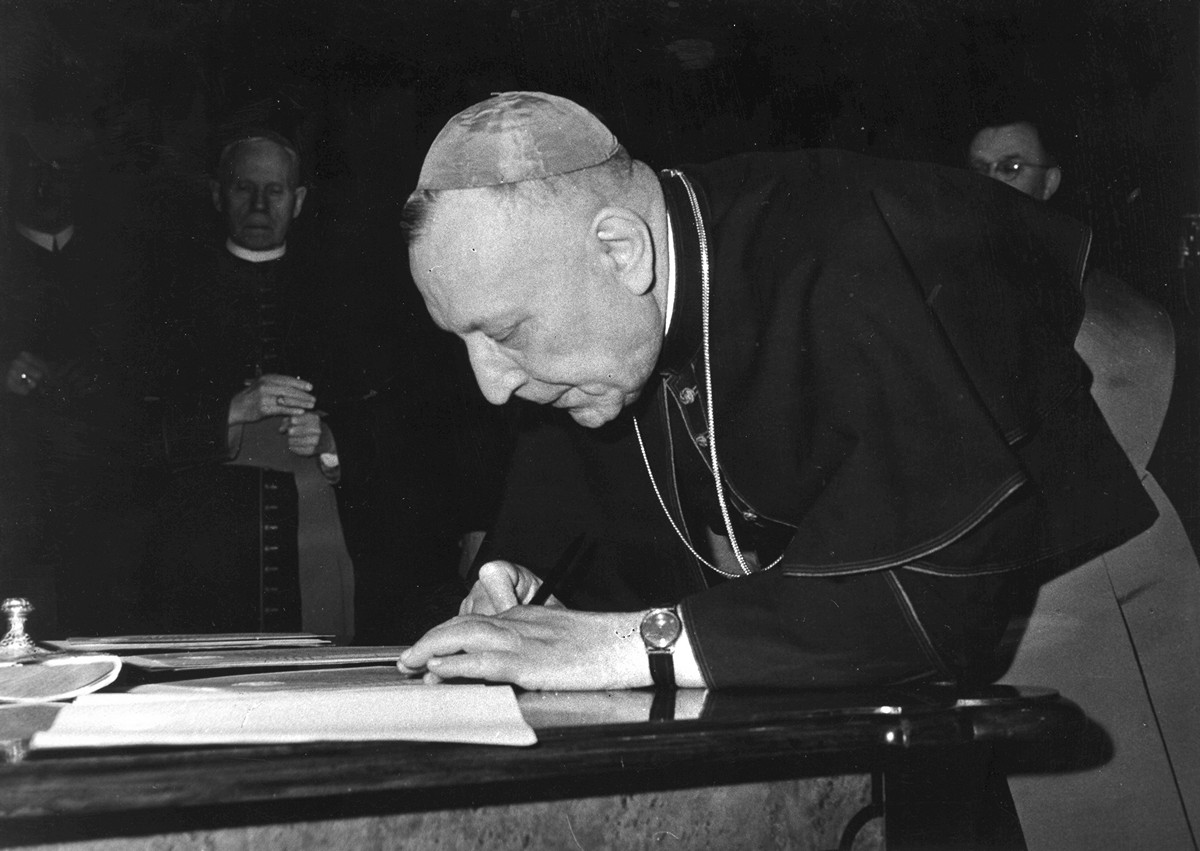
Archbishop József Grősz of Kalocsa signs the oath of allegiance to the Hungarian People’s Republic and its Constitution. 24 April 1959. (Kalocsai Főegyházmegyei Levéltár)
It will identify patterns of continuity and discontinuity among the church policies of different regimes. In accordance with the critical assessment of the secularisation thesis, it will identify individual models of secularism in the region and moments of “resacralisation” (i.e. the “return of religion” to public life). Thus, the project will provide valid outcomes to enrich our understanding of the evolution of the present typologies of church-state relations in Europe. Furthermore, SOVEREIGNTY also aims to overturn approaches to the study of relations between the Holy See and Central Eastern Europe that focus almost exclusively on the bilateral relations between the states and the Vatican. Instead, the project proposes to focus on internal church-state relations, and it argues that these kinds of relations, viewed over time, can provide an entirely new angle on the relations between the Holy See and the Central Eastern European region. Given the manner in which the oath of loyalty to the state survived over time as a practice (despite changes to the actual texts of the oaths), this practice offers a revealing perspective from which to examine how the individual political systems related to the Church and the extent to which they sought to use the Church hierarchy as a possible means of legitimizing their claim to power. The relation of the (lower and upper) clergy to the oaths also offers insights into the transformation of local Church elite’s understanding of its own role and the mental frameworks that determined the relationship between secular power and the Church spanning changes of regimes.
3. Catholicism and Nation(alism)
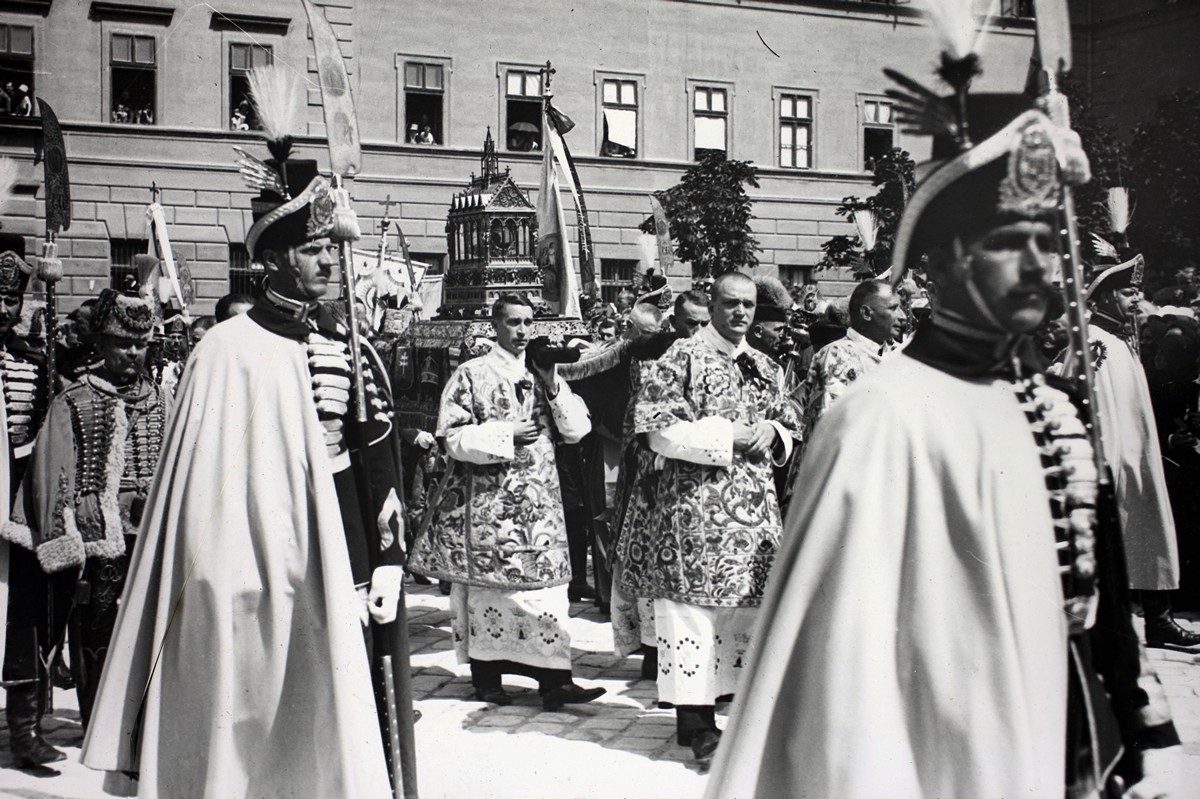
Procession of the Holy Right, Budapest 1934 (Fortepan/Friss Ildikó)
The project examines the complex relationship between national and Catholic identities (a relationship that shifted over time) from the perspective of changes to the oaths of loyalty to the state (both as text and as practice). By offering a synchronic and diachronic examination of the attitudes (essentially, their preferences with regards to their own loyalties) of the middle-level historical agents who were obliged to take the oaths towards the various forms of oath, the project will capture the common and distinctive features of the role of Catholicism in nation building and, in connection with this, the shifting functions of the Catholic hierarchy among the peoples of the Habsburg Monarchy. It also sheds new light on the Holy See’s attitude towards nationalism and “national Catholicisms” from the perspective of the evolution of the local relationship between nation and Catholicism.
4. Modern state sovereignty
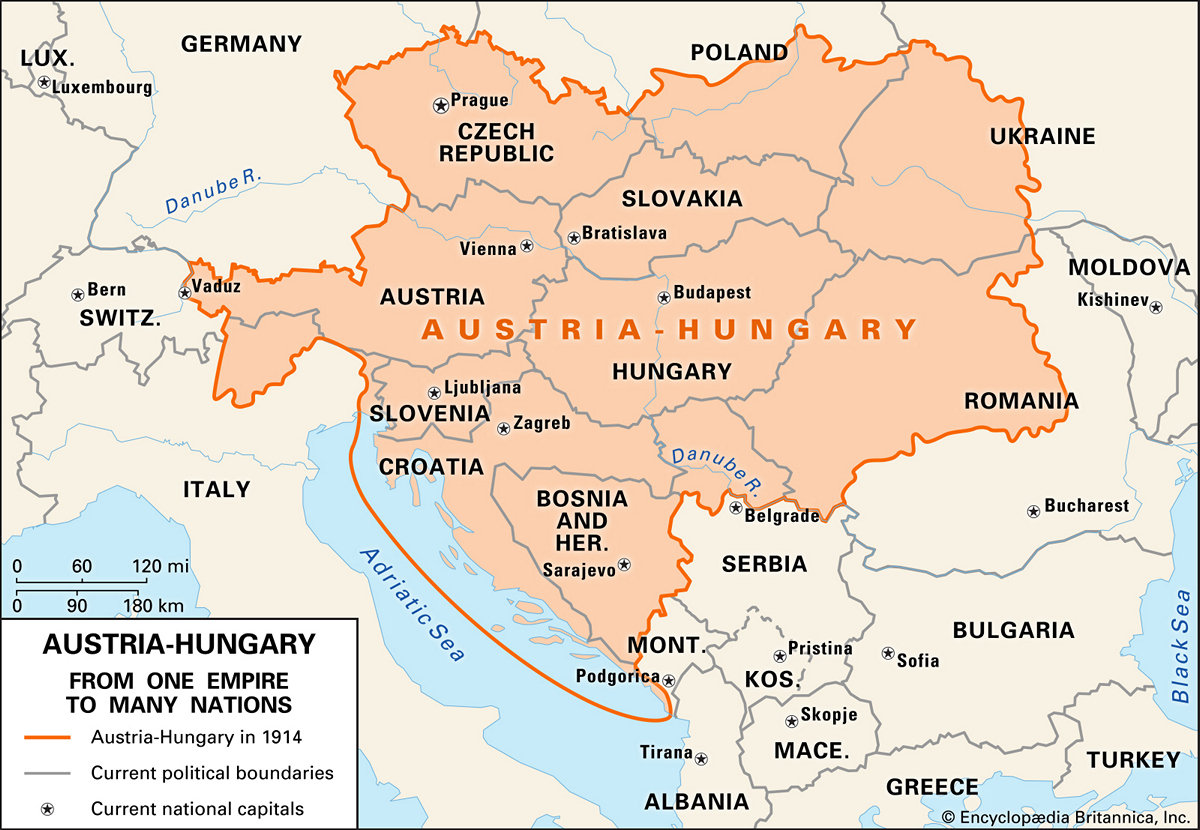
Austria-Hungary 1914 (Encyclopædia Britannica)
The project uses the oath of loyalty to the state as an analytical tool to examine, from a new approach, the connections between the process of secularization and nation building and the steps taken to enforce the modern state’s claim to sovereignty. It argues that state religious policy which touched the transnational Catholic Church—whether a policy of secularization or re-sacralization—can also be understood as an instrument with which the modern state sought to secure its sovereignty, regardless of political system or regime. This explains why the states of the region ultimately combined the secularization model of the French Revolution and the patterns of Josephine church policy in their religious policy. Finally, an analysis of the history of the oath of loyalty to the state shows that unilateral state measures to ensure sovereignty in Central Eastern Europe were temporarily effective at most, and long-term solutions were always reached through compromises with the transnational partner.